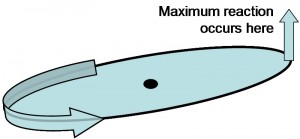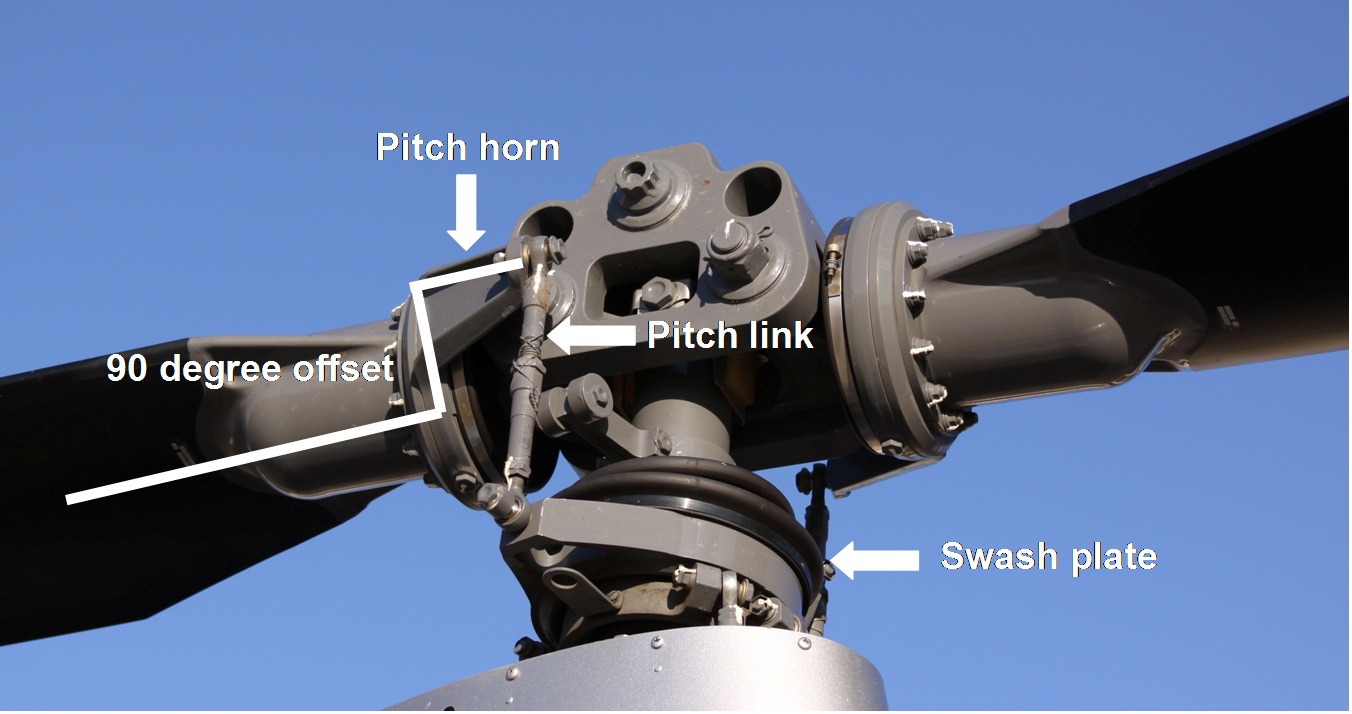When reading about helicopter aerodynamics you will see the term gyroscopic precession. It refers to a principle of gyroscopes that states when a force is applied to a spinning object, the maximum reaction occurs approximately 90 degrees later in the direction of rotation. Since a helicopter’s main rotor acts like a gyroscope, this principle applies to the rotor disc.
.jpg)

To understand what this means for a helicopter we need to know the basics of how a rotor disc tilts in the direction commanded by the pilot. Fundamentally, the pitch of each blade is controlled by a swash plate, and each blade is connected to the upper ring (also called the rotating part) of the swash plate via a pitch link. The cyclic flight control is connected to the lower ring (also called the non-rotating part). When control inputs are made it tilts the swash plate changing the pitch of each blade independently, according to the blade’s position, to tilt the rotor disk in the desired direction.
This can be observed during a pre-flight. If you move the cyclic control forward you will see the swash plate tilt forward. While the swash plate actually tilts in the direction that the cyclic control moves, each blade’s pitch must change approximately 90 degrees prior to get the rotor disk to also tilt in that direction. This is accomplished by the blades’ pitch horns which are offset approximately 90 degrees. Therefore, to tilt the rotor disc forward in-flight (in a rotor system that spins counter-clock-wise) the pitch of the blade on the right decreases and the one on the left increases. Since maximum deflection takes place approximately 90 degrees later, the disc tilts forward.



